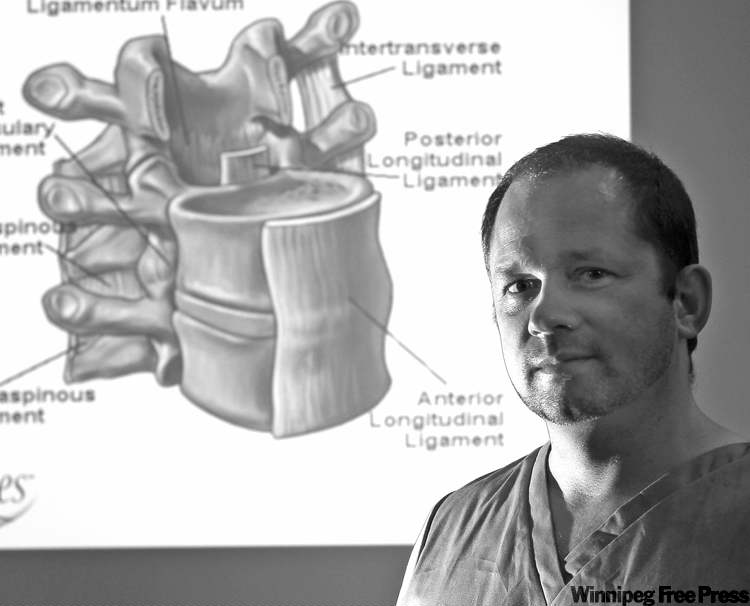An industry working in fear
Health employees common victims of violence
Advertisement
Read this article for free:
or
Already have an account? Log in here »
To continue reading, please subscribe:
Monthly Digital Subscription
$0 for the first 4 weeks*
- Enjoy unlimited reading on winnipegfreepress.com
- Read the E-Edition, our digital replica newspaper
- Access News Break, our award-winning app
- Play interactive puzzles
*No charge for 4 weeks then price increases to the regular rate of $19.00 plus GST every four weeks. Offer available to new and qualified returning subscribers only. Cancel any time.
Monthly Digital Subscription
$4.75/week*
- Enjoy unlimited reading on winnipegfreepress.com
- Read the E-Edition, our digital replica newspaper
- Access News Break, our award-winning app
- Play interactive puzzles
*Billed as $19 plus GST every four weeks. Cancel any time.
To continue reading, please subscribe:
Add Free Press access to your Brandon Sun subscription for only an additional
$1 for the first 4 weeks*
*Your next subscription payment will increase by $1.00 and you will be charged $16.99 plus GST for four weeks. After four weeks, your payment will increase to $23.99 plus GST every four weeks.
Read unlimited articles for free today:
or
Already have an account? Log in here »
Hey there, time traveller!
This article was published 04/07/2011 (5262 days ago), so information in it may no longer be current.
They dedicate their lives to helping others. But health-care workers often end up being victims of violence.
Employees in the health industry, such as nurse aides and orderlies, are the largest group of people who lose time at work due to assaults or violence, according to recent statistics from the Workers Compensation Board.
Figures from the WCB — which cover more than 70 per cent of Manitoba employers — show 372 people in these types of jobs missed work from 2006 to 2010 while they recovered from injuries caused during violent incidents. The group also includes people like hospital attendants and long-term care aides.

Also impacted in the same four-year time frame were 83 registered nurses and 55 licensed practical nurses.
Sandi Mowat, the Manitoba Nurses Union president, said she believes nurses have become “inured” to violence.
“Behaviours are changing in workplaces, and these kind of incidents are becoming more prevalent,” she said.
“There’s always been incidents in health care. I do think that they’re much more frequent now –you get to the point where it just becomes another daily thing.”
Many incidents happen in long-term care like nursing homes, she said.
“The dementia issue does come into play — a nurse may decide not to press charges because she or he knows that the person isn’t responsible for their actions,” she said.
She said she’s also heard anecdotally police are sometimes “not always that eager” to pursue charges against a patient for an assault. She said health care workers can hit “so many roadblocks” it discourages them.
“The feeling out there is, what’s the point?”
Recent criminal cases have highlighted the issue of violence against health care workers, like one in western Manitoba earlier this year.
In March, a 26-year-old patient at a Hamiota health centre was charged after he allegedly assaulted a licensed practical nurse with a weapon and locked her and another nurse in a room.
Matthew Braun, an occupational therapist and co-owner of Safe Moves Injury Prevention Solutions, said a large number of violent acts against health workers are due to dementia.
He’s developed training for nurses and health-care aides who work with people who are “potentially aggressive or (have) a history of being agitated or aggressive towards staff.”
“I know there’s a lot of fear based on this,” he said.
“We think there’s criminals lurking in the health care system, and there’s just a lot of residents and patients who are feeling overwhelmed and need to be assessed.”
He recommends people who work with those with dementia and a history of aggression use special approaches. That means going up to them slowly from the front, using a gentle voice and addressing the person on their non-dominant side.
“All behaviour has meaning. And all (violent) behaviour with a resident or patient who has dementia, it can be a symptom of an illness or an unmet emotional or physical need. This is where most of the acts of aggression and violence in health care come from, from residents who have dementia and they become overwhelmed in their environment, in their room,” said Braun.
The statistics from the WCB don’t track how many workers lay charges over their injuries or those that don’t report their injuries. The statistics also apply to violent acts by animals as well as humans. From 2006 to 2010, for example, there were 20 general farm workers who took time off work due to violence or assaults.
“(It) can mean anything from being kicked by a cow to being attacked by a patient to being attacked by a criminal,” said Warren Preece, a WCB spokesman.
gabrielle.giroday@freepress.mb.ca
DANGER PAY: The first in a four-day Free Press series on violence at work


